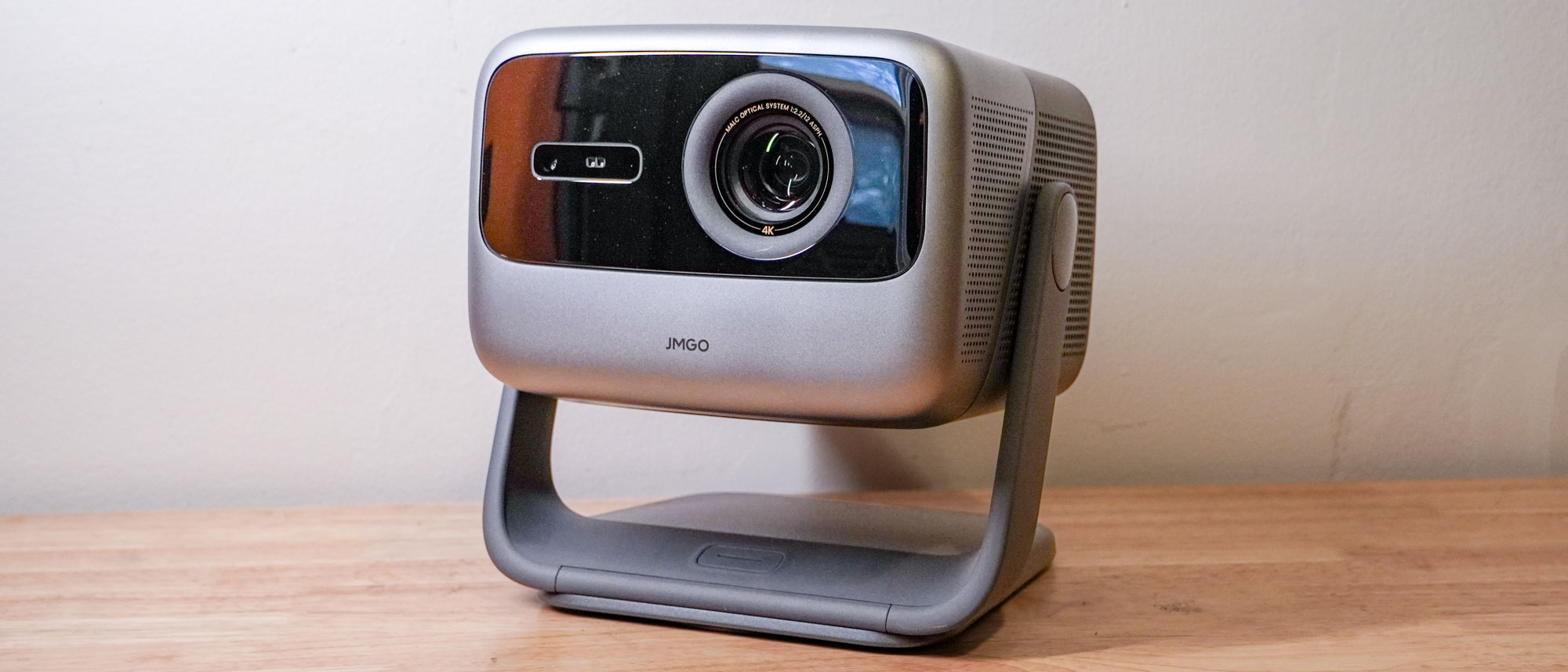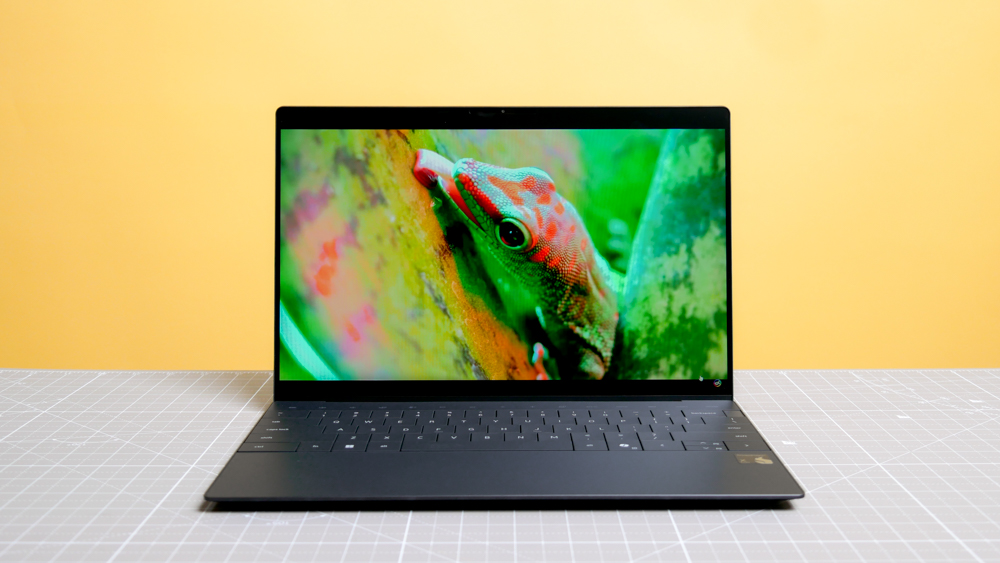Tom's Guide Verdict
JMGO’s N1S Ultimate is a killer projector, but it has only a few upgrades over its predecessor. Meanwhile, Hisense has made huge upgrades that leaves JMGO little room to breathe at the high end.
Pros
- +
Stunning color and brightness
- +
Easy to setup and use
- +
Netflix supported natively
Cons
- -
Most adjustments are digital
- -
Peak brightness lowers image quality
- -
Gaming mode still has subtle latency
Why you can trust Tom's Guide
Price: $2799
Resolution: 4K
Lumens: 3500 ANSI
Audio: 2x10W
Light: RGB Laser
Projection: 0.47" DLP
Screen size: 60-180 inches
HDR: HDR10, HLG
Refresh Rate: 60Hz
Ports: 2x HDMI 2.1 (1x eARC), 1x USB
Smart TV Software: Google TV
Size: 9.48 x 7.99 x 9.29 inches
Weight: 14.3 lbs.
Lifespan: 30000 hours
JMGO has something of a mild refresh to its projector lineup with the N1S series. I previously tested the JMGO N1 Ultra and found it quite an impressive little beast indeed.
This year’s lineup includes the N1S, N1S Pro, N1S Ultra, and the N1S Ultimate (reviewed here). It gets to be rather confusing, but the N1S Ultimate sits at the top of the stack with all of the features, and the highest brightness levels, though it doesn’t add much that the N1S Ultra and N1S Pro don’t also include at considerably lower prices.
At $2,799, the N1S Ultimate isn’t a cheap option, but it’s not a disappointing one either. The triple-laser projection system proves plenty bright even for lit rooms (just be sure you can keep up sunlight), and is as astoundingly colorful as ever. But with brightness being its big upgrade, folks who are willing to instead dim the light and invest in far more affordable blackout curtains may struggle to see a reason to choose this model.
Its biggest problem, however, is the $2,999 Hisense C2 Ultra, which stood out for much the same qualities as the N1S Ultimate but doubled down with better sound, optical zoom, and a 240Hz game mode that absolutely rips for fast-paced gaming.
JMGO N1S Ultimate review: Pricing and availability
The JMGO N1S Ultimate is currently available and launched with a starting price of $2,799. Since its launch, I have seen the price fall as low as $1,999.
While that pricing may have been intended for Black Friday and Cyber Monday savings, it has stuck around a little bit longer than I would have expected and may become a sticky street price that the projector remains at.
Given some of its competition, it would be smart for JMGO to keep it at that price.
Get instant access to breaking news, the hottest reviews, great deals and helpful tips.
JMGO N1S Ultimate review: Design
JMGO appears to have figured out its formula and stuck with it for the new lineup. The JMGO N1S Ultimate bears so much in common with the N1S Ultra I tested last year, that I don’t think I’d be able to say which was which if you put them beside each other.

The N1S Ultimate continues the two-tone, gray design. It also continues to set the projector body onto an adjustable stand, allowing for easy vertical and rotational adjustments of the projection. Power goes directly into the base while the back of the projector body offers two HDMI ports, USB, and a 3.5mm audio output.


The unit is plenty compact and lightweight, making it easy to carry around. And JMGO includes a styrofoam case just for the purpose. It continues to be tricky to remember the exact arrangement to get everything in the case and have it close, and it’s very particular about closing. But once it’s sealed up, it’s ready to protect the projector on its adventures.


The sides of the projector are covered in ventilation holes that let air in and sound out. The rear is also largely covered by a large grille for air to exhaust out of. While it looks like it’s covered in heatsink fins, it’s really just lined with plastic vents that do little to help expel heat.

The front of the projector includes the projection lens as well as a series of sensors that help the JMGO N1S Ultimate with a few correction features. The sensors play a part in auto focus, image adjustments to shrink the picture to fit a given space, and a laser dimming feature to protect the eyes of anyone who walks in front of the projector — an important consideration considering the strong lasers used in this device.
JMGO N1S Ultimate review: Performance
The JMGO N1S Ultimate has the same projector DNA that has made for so many great projectors. Its triple-laser light source (though certainly using quite a few more lasers in total than that) provides an amply bright image for many different conditions and offers imagery that sparkles with color.
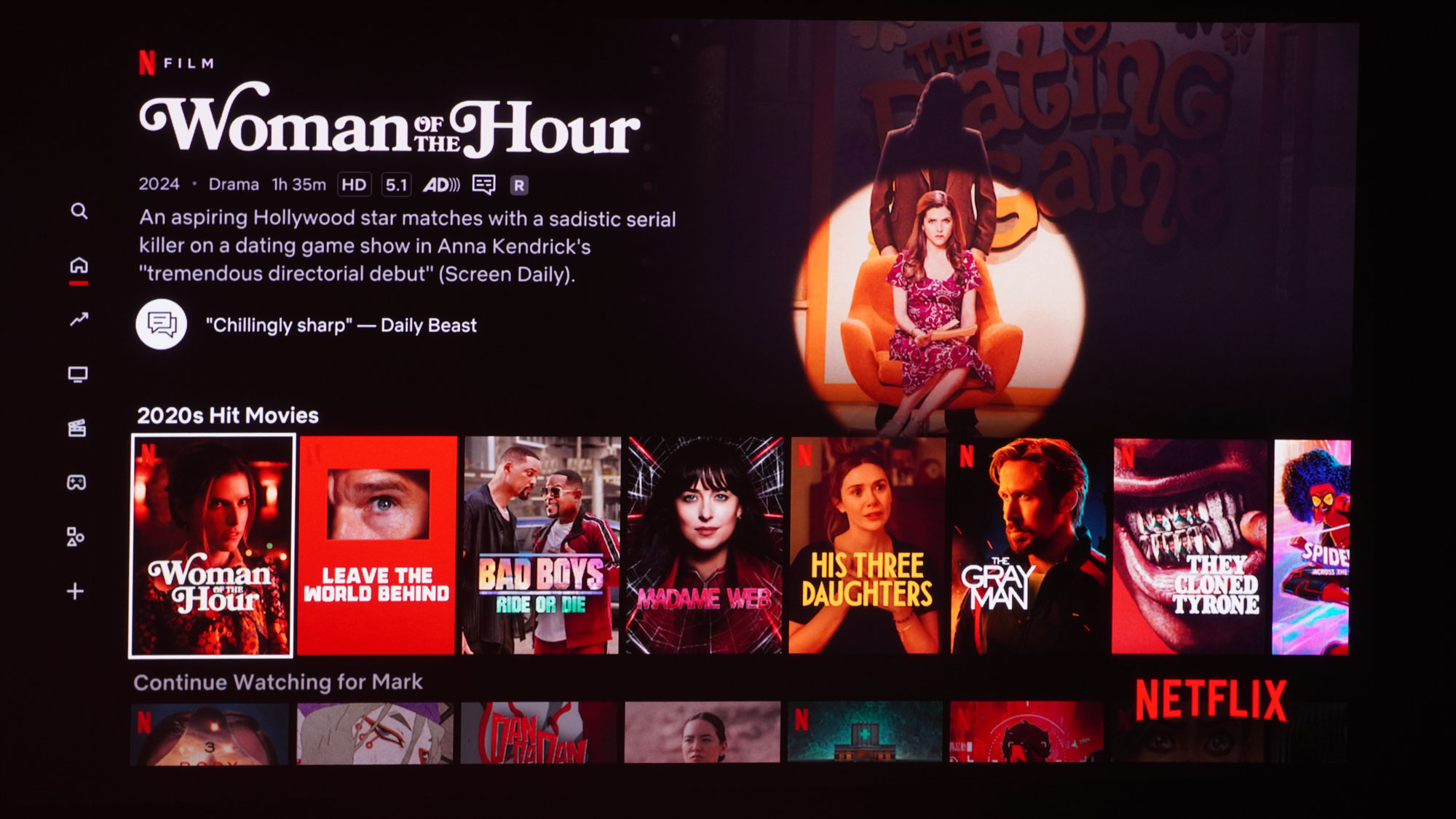
Right from the jump, you can see how it punches out the color. Open up Netflix, and the red letter “N” fires out of the projector with incredible vibrance. The sharpness and color can bring worlds to life. Whether it’s the contrast of London at night or its many fanciful illuminations in “Black Doves,” the JMGO N1S Ultimate presents them wonderfully.

Like others I've seen, the projector can struggle when displaying thin lines or bright lights that move, as it can create a flicker as the bright sections move into new positions with each frame. The projector's motion interpolation is able to remedy this slightly, though not as readily as Hisense's and not without introducing its own motion artifacts and soap opera effect.

The projector has a number of automatic image adjustment tools, but they’re not entirely dependable. The projector doesn’t always squeeze the image into the available space, and when set at the back of a room, struggles to get the picture properly in focus. It’s quite quick and adept at making keystone corrections, though, helping square up an image rather than leaving a distorted trapezoid.
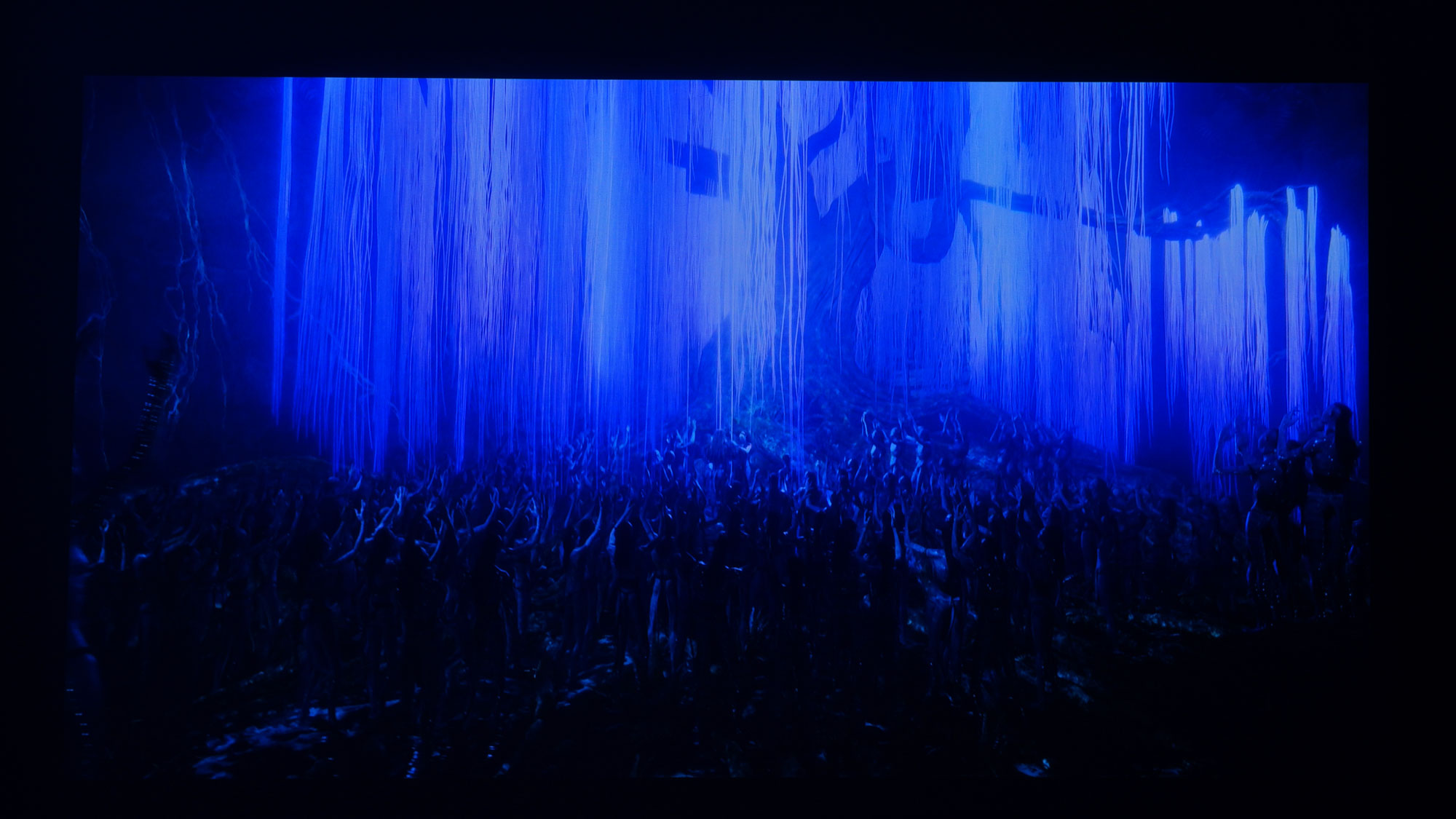
Unfortunately, most of the projector’s image adjustments are digital, so they all cut into the actual displayed pixels (i.e., zooming in, reduces the resolution). With its reliance on digital zoom and keystone, I’d have loved to see a lower black level, as these leave quite a bit of subtly illuminated area around the active picture. I also find it strange that JMGO advertises the device as having “lossless zoom” when the digital zoom, by its nature, results in lost resolution.
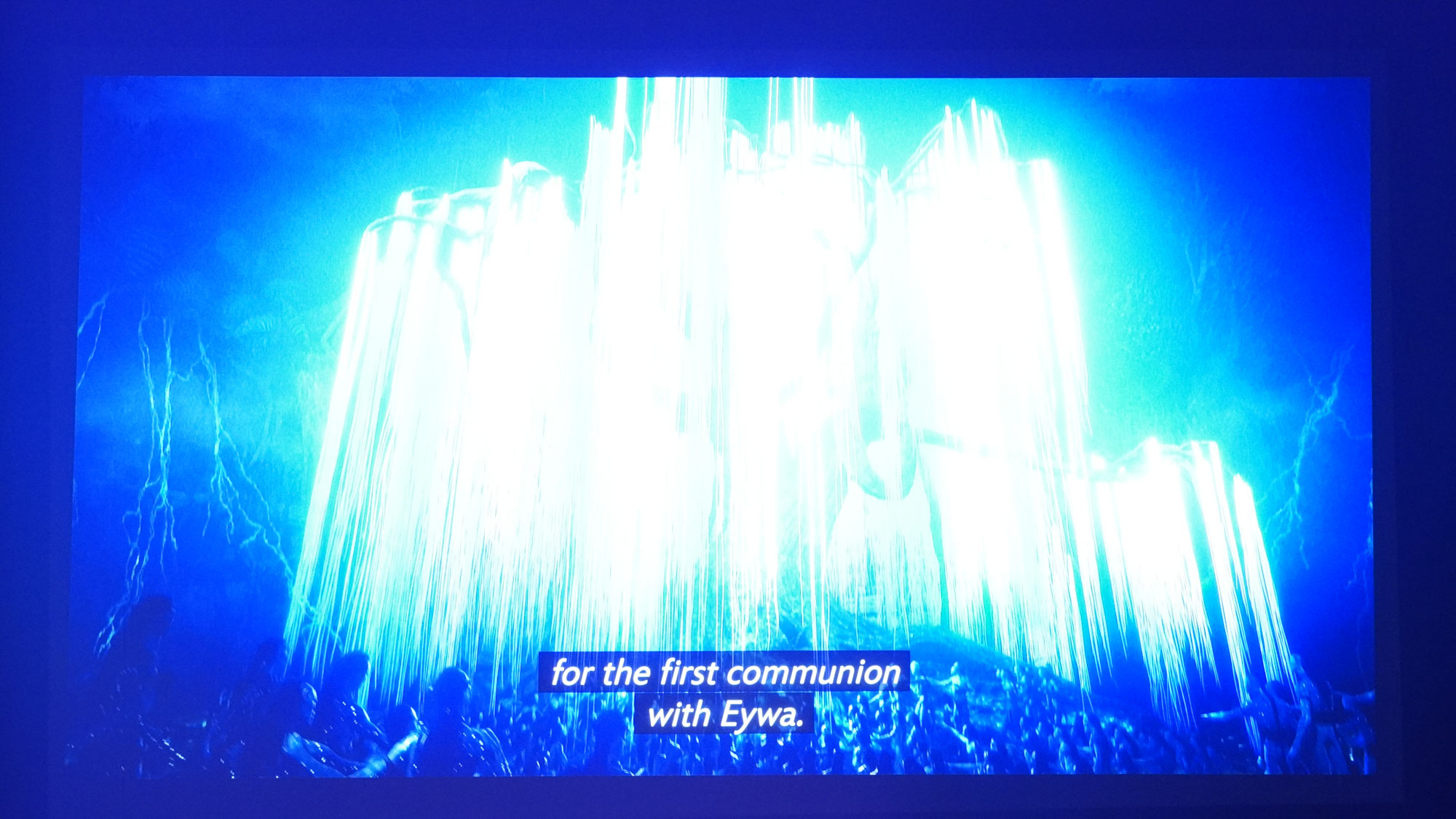
The JMGO N1S Ultimate also has an odd light bleed. It spills out at a downward angle. With the projector up on a perch behind my couch, it lights up an area on the couch almost like a reading lamp. It’s not intense or obnoxious, but it shouldn’t be happening.
JMGO N1S Ultimate review: Test Results
The JMGO N1S Ultimate is a stalwart little projector, though maybe not the incredible leap up from its predecessor that it ought to be. In testing, the projector was readily able to achieve 2,538 lumens.

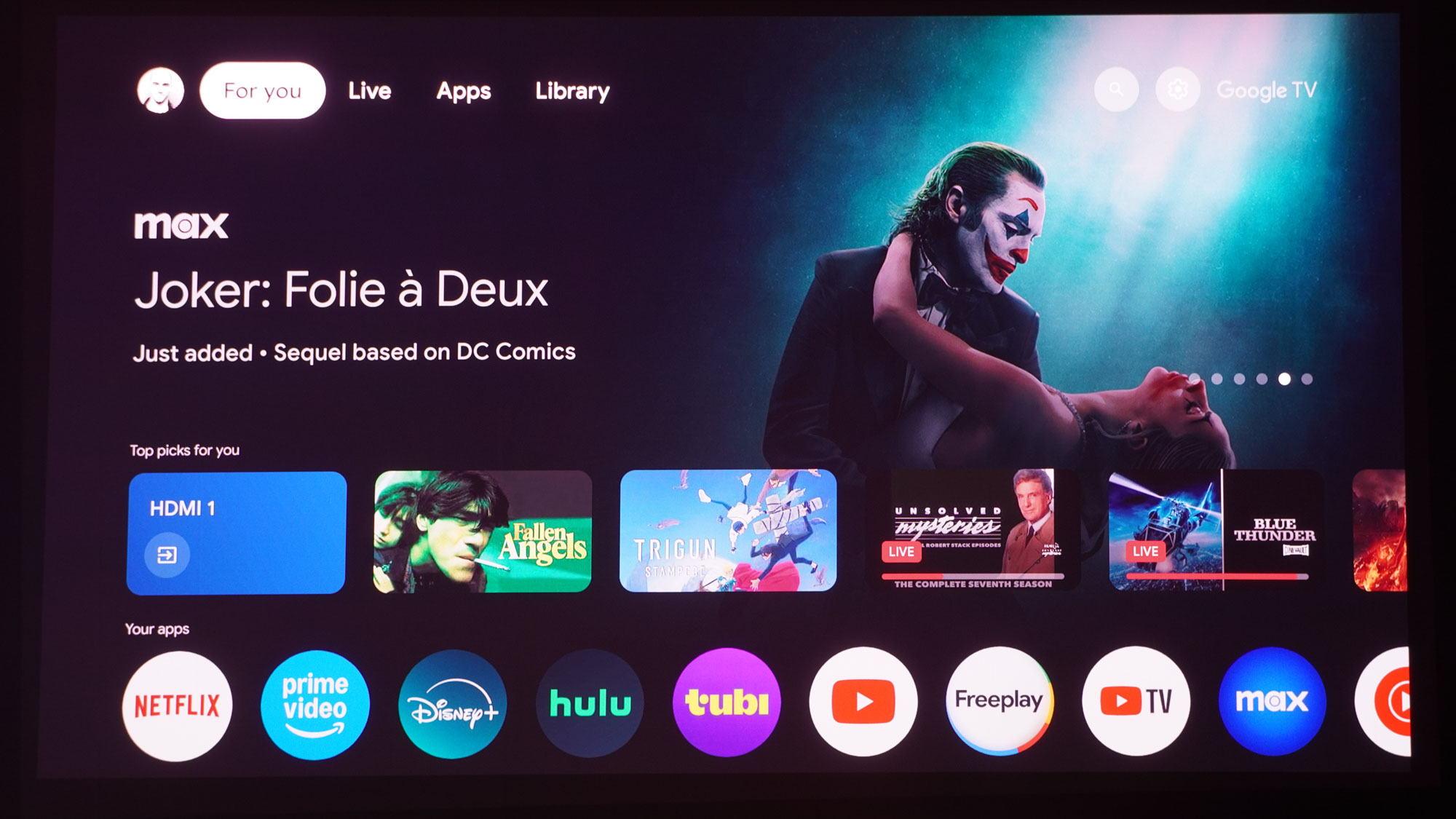
It has an ultra-brightness mode that lets it go even further, hitting a measured 3,340 lumens, but this came with an unacceptable hit to picture quality, casting the whole picture in a greenish tint. This is pretty typical of projectors that offer brightness boosting modes.
| Row 0 - Cell 0 | JMGO N1S Ultimate | JMGO N1S Ultimate | Xgimi Horizon S Max | Hisense C1 | JMGO N1 Ultra | Dangbei Mars Pro 4K |
Brightness (ANSI lumens): | 2583 | 3231 | 2612 | 1946 | 2143 | 1812 |
Contrast: | 1401:1 | 1330:1 | 1951:1 | 1757:1 | 1577:1 | 1105:1 |
sRGB coverage: | 100% | 100% | 100% | 100% | 100% | 92% |
DCI-P3 coverage: | 97% | 96% | 96% | 97% | 96% | 75% |
Input lag (default): | 144ms | 50ms | 151ms | 150ms | 144ms | 152ms |
Input lag (gaming mode): | 47ms | 51ms | 25ms | 51ms | 28ms | 27ms |
Lifespan: | 30000 hours | 25000 hours | 20000 hours | 25,000 hours | 30,000 hours | 30,000 hours |
MSRP: | $2,799 | $2,999 | $1,899 | $1,999 | $2,299 | $1,799 |
Street price: | $2,000 | $2,499 | $1,899 | $1,497 | $1,574 | $1,299 |
Following up the brightness test, I measured the brightness of an all-black image to determine the FOFO (full-on, full-off) contrast of the projector, and here the JGMO N1S Ultimate performed admirably, shining at a little under 2 lumens for a 1,401:1 contrast ratio. Actual native contrast for a picture that includes dark and bright imagery at the same time is considerably reduced with a checkerboard pattern resulting in a 72.5:1 contrast ratio, but this is still quite strong for a projector.

Checking the color gamut of the JMGO N1S Ultimate with a SpyderX Elite colorimeter positioned roughly a foot away from a 1.1-gain projection screen, I measured 100% coverage of the sRGB and Adobe RGB color spaces as well as 97% coverage of the DCI-P3 color space and 94% of the Rec.2020 color space.
JMGO N1S Ultimate review: Audio
Like most projectors in its class, the JMGO N1S Ultimate has speakers that don’t keep up with the quality of the picture. While you can go massive and bright with the imagery, the audio is more modest. The system combines a pair of 10-watt speakers to deliver respectable volume for a 200-square-foot room, but if you have a large viewing party with talkative guests, you’ll likely be in search of speakers to upgrade the audio.
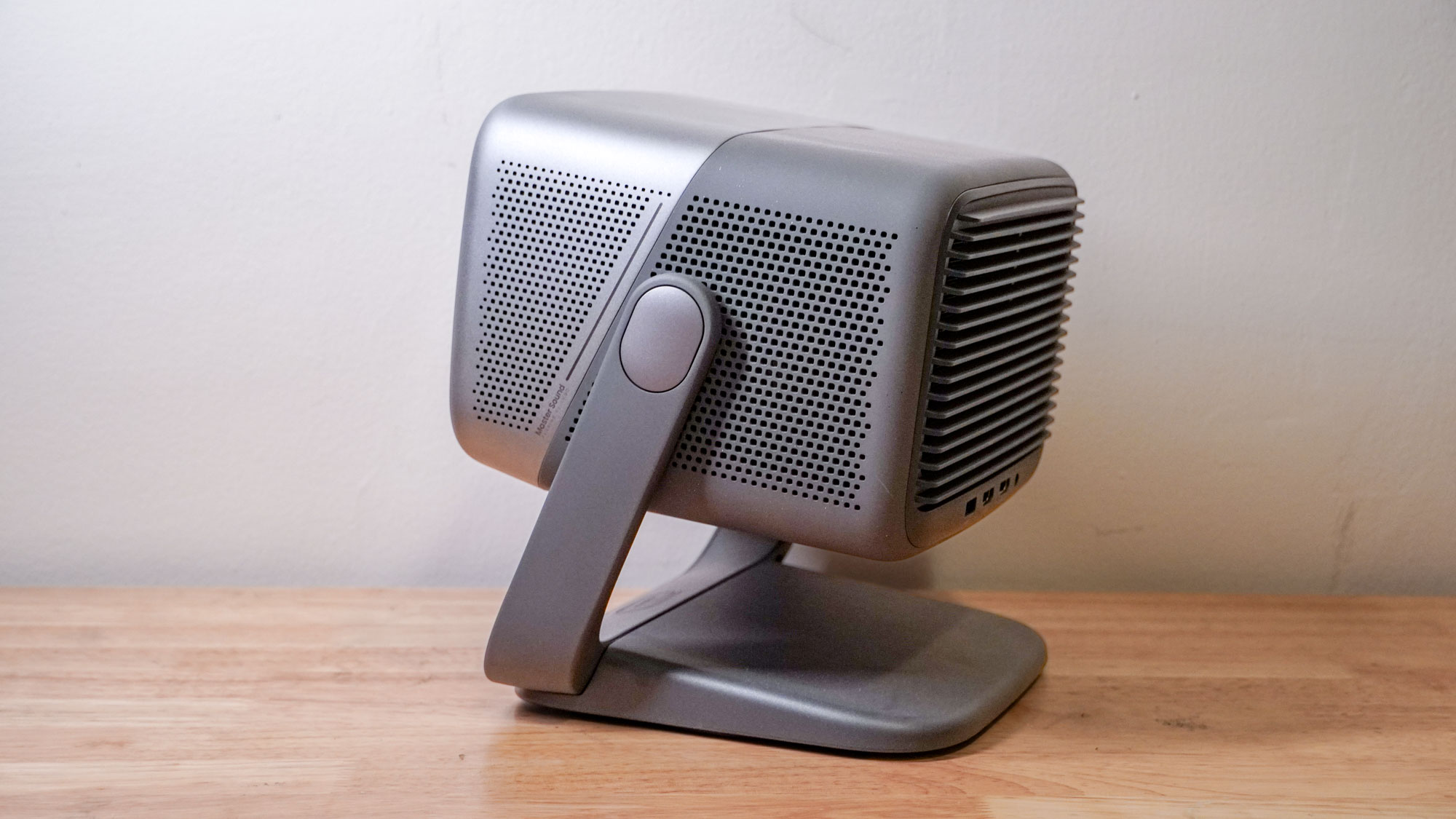
The speakers offer punchy mids and a bit of bass, but higher treble tones fall pretty low in the mix and there’s really no sub-bass to speak of. Even though JMGO suggests the speakers can reach as low as 45Hz, I found them largely failing to reproduce a 45Hz signal.
JMGO N1S Ultimate review: Gaming
The JMGO N1S Ultimate doesn’t have any particularly powerful enhancements for gaming. It can switch over to a game mode that will reduce the amount of image processing done in an attempt to reduce latency, but it’s not turning the projector into a zero-latency, ultra-fast gaming machine with the flick of a switch.
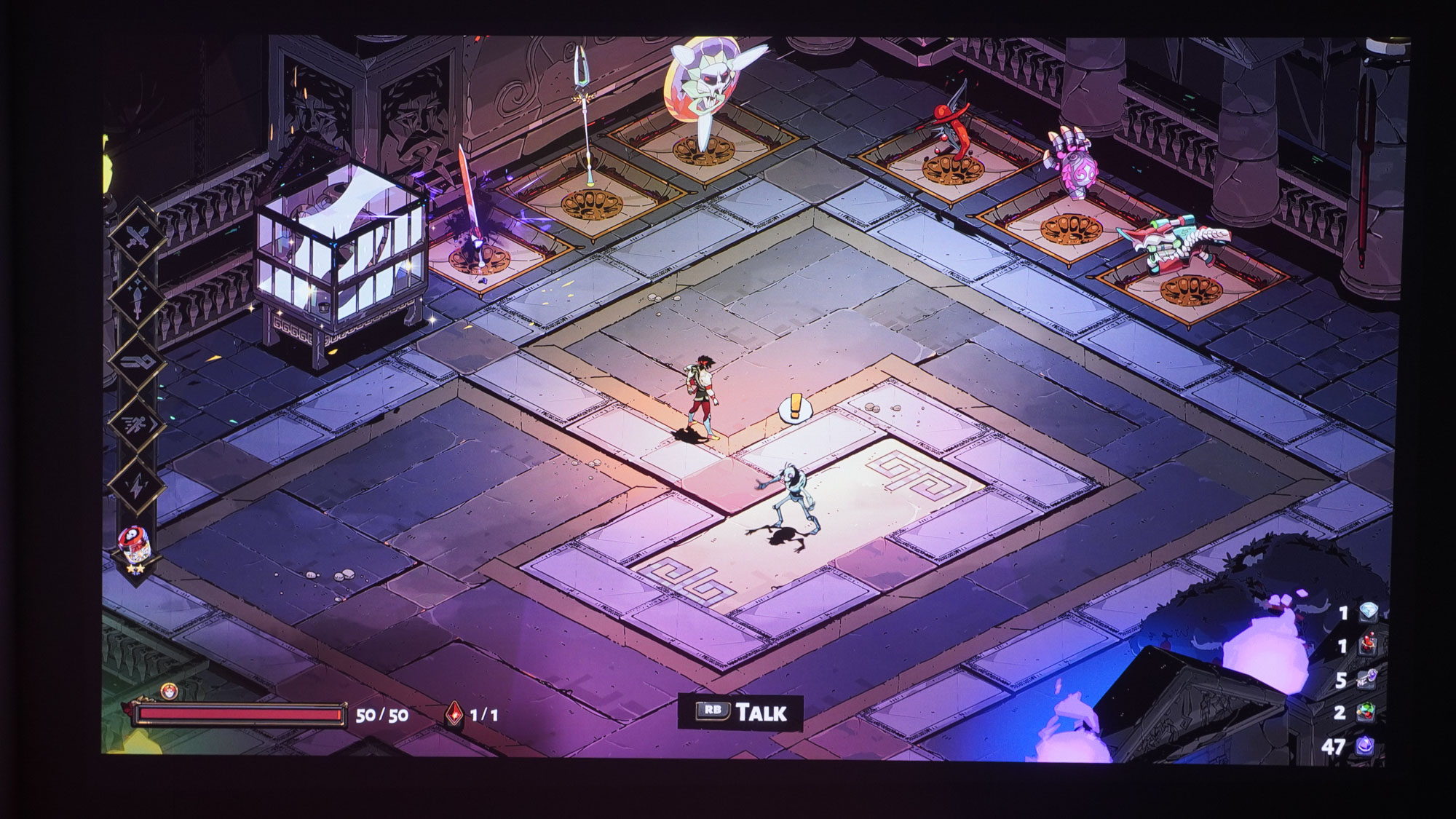
Without its gaming mode, the JMGO N1S Ultimate isn’t good for gaming. Using a camera with a fast shutter speed and a timecode generator to measure the difference between the projection and a 120Hz OLED source, the JMGO N1S Ultimate lagged behind by 144ms without its game mode. This dropped to 47ms with the game mode enabled.
It’s not perfectly responsive, but it was definitely good enough to fight my way through quite a few levels of Hades without laggy inputs getting me killed. Still, next to 240Hz mode available to the Hisense C2 Ultra, the JGMO falls short.
JMGO N1S Ultimate review: Smart TV Interface
JMGO brings Google TV to the N1S Ultimate, marking a notable upgrade over Android TV included on the N1 Ultra I tested last year. Not only does this continue to provide access to plenty of streaming services and applications, but it also comes with native Netflix support without the need to use any weird workarounds.
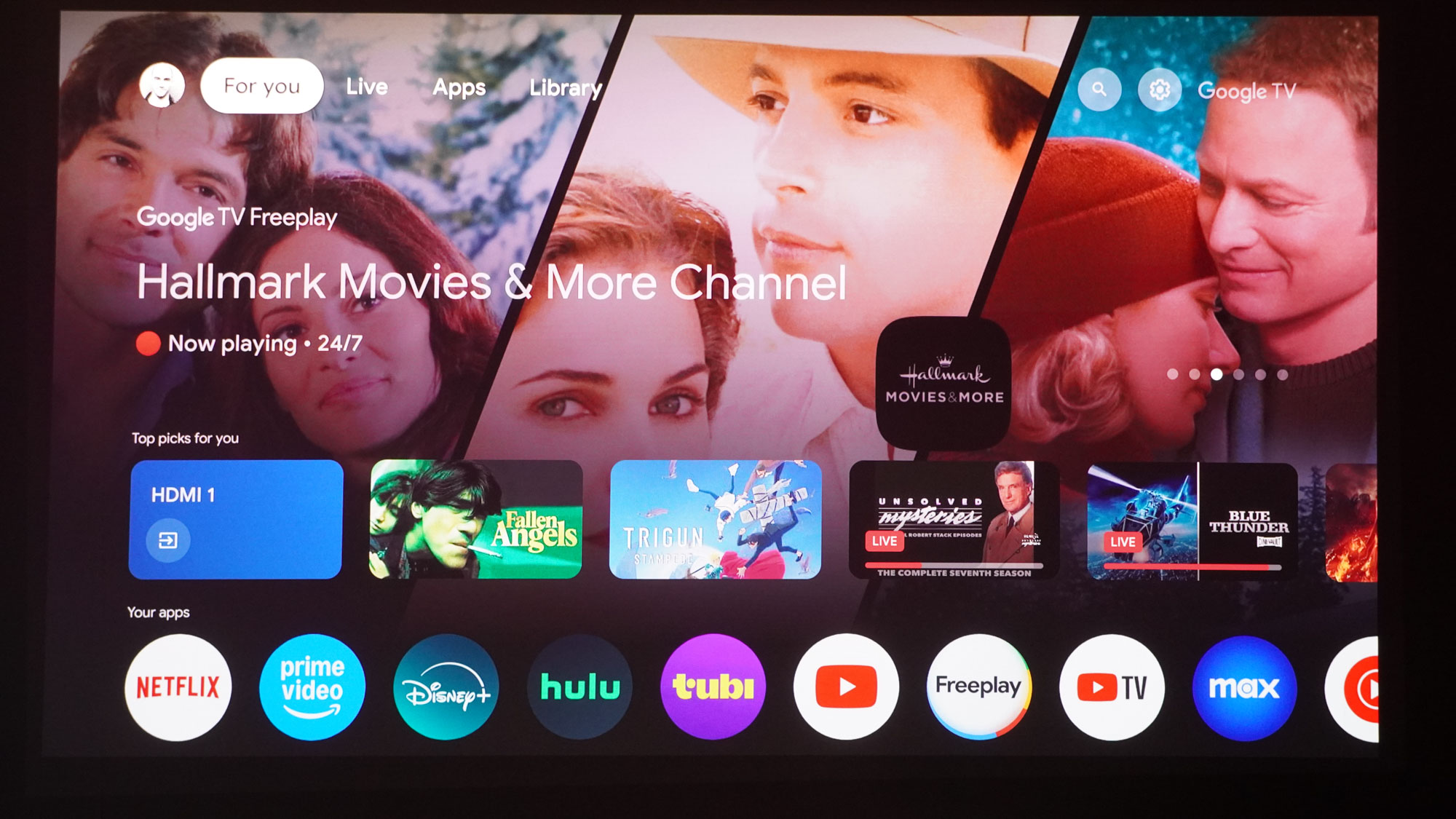
The Google TV interface is easy to navigate and find content on. Unfortunately, JMGO is still packing underprepared hardware to run the operating system and it can occasionally be a bit laggy in responding to inputs and slow to pull up menus. While it generally doesn’t take too long to get into an app and pull up something to watch, you’ll find it a bit more bogged down if you frequently jump around between apps or tweak settings often.
JMGO N1S Ultimate review: Remote
JMGO’s remote is quite basic. It has a quick shortcut to Google Assistant for voice controls, a four-directional navigation ring that’s easy enough to feel out, and a handful of additional shortcut buttons. You get home, back, menu, and settings buttons as well as a pill-shaped button for volume that helps for feeling it out in the dark.

The simplicity may help some, as there’s no backlighting to the buttons, so it’s very hard to see them in the dark of a home theater.
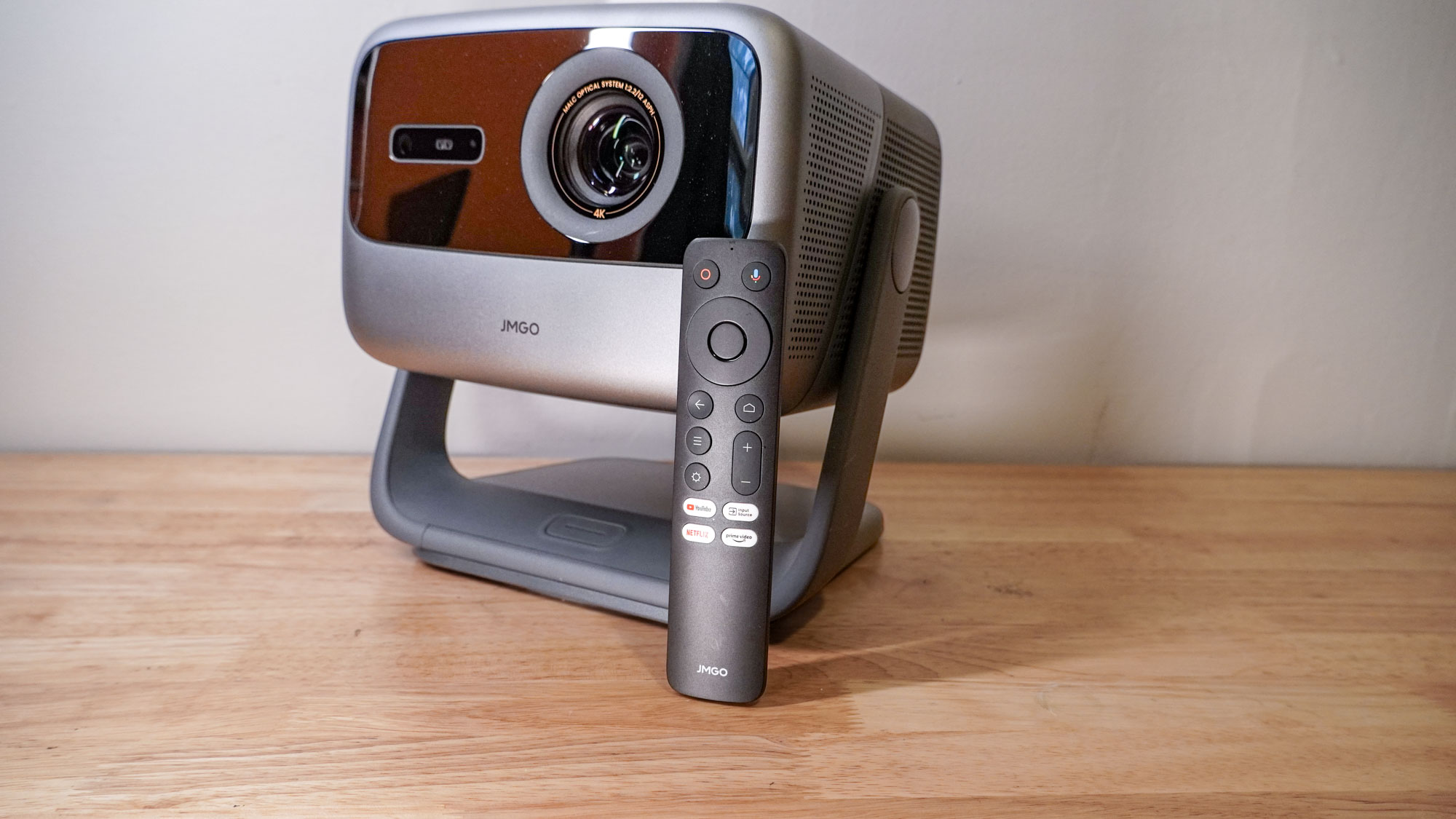
The remote includes three shortcut buttons to Netflix, Prime Video, and YouTube — no custom shortcuts. There’s also a dedicated input source button, which can be especially convenient if you plan on using the projector largely with external devices, since it provides a quick way to switch away from the somewhat slow built-in operating system.
JMGO N1S Ultimate review: Verdict
The JMGO N1S Ultimate is a powerful projector and a small upgrade over last year’s N1 Ultra. It can dazzle with its bright and stunningly colorful triple-laser projection system, and it's incredibly easy to set up and enjoy a wonderful movie-watching experience.
At $2,799, however, it’s a pricey option, and comes way too close to the Hisense C2 Ultra, which has some serious advantages in audio, gaming, brightness, and flexibility.
With that in mind, the N1S Ultimate becomes harder to recommend unless it’s going for the $1999 price it’s recently hovered at. And if you don’t need the extra brightness available to the N1S Ultimate, you may find the cheaper N1S Ultra and N1S Pro get you largely the same experience with lower brightness levels (but still plenty for a dark room).
Over the last several years, Mark has been tasked as a writer, an editor, and a manager, interacting with published content from all angles. He is intimately familiar with the editorial process from the inception of an article idea, through the iterative process, past publishing, and down the road into performance analysis.
You must confirm your public display name before commenting
Please logout and then login again, you will then be prompted to enter your display name.
